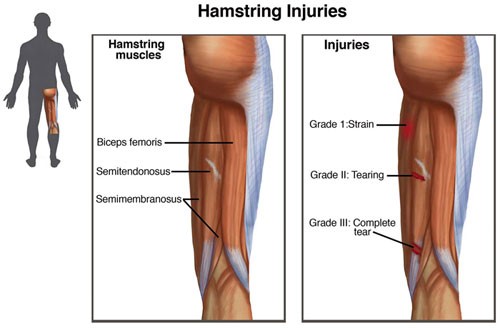Literally a Pain in the Leg
There are few injuries as limiting as a hamstring injury. Anyone who has hurt their hamstring knows how difficult sitting, walking, and any other activities can be. Hamstring damage is one of the most common injuries of the lower body, particularly affecting athletes participating in sports such as football, soccer, or track. After tearing a hamstring muscle, a person is 5 times more likely to suffer another injury to the hamstring in the future. In most cases, hamstring injuries are managed conservatively with physical therapy.
How Do Hamstring Injuries Occur?
Hamstring injuries occur when excessive force is placed across the muscles. This typically happens during sudden starts or stops when running, a rapid change of direction with “cutting” or jumping maneuvers, or when the muscle is overstretched by activities such as running, sprinting, hurdling, kicking, or heavy lifting.
[Read more about sports-related injuries, training, and rehab here.]
Quick Tips for Initial Treatment
During the first 24-48 hours following injury:
• Rest the injured area and avoid aggravating activities, such as walking or working out. If you have notable difficulty walking, crutches may be recommended.
• Apply ice to the injured area 3-4 times/day for 15-20 minutes (with a towel placed between your skin and the ice).
[See our PT Hack video “Heat or Ice” for more tips about when to use each.]
• Use a compression wrap to help decrease swelling and ease pain.
Reduce the Risk of Hamstring Injury
• Always warm up before participating in athletic activities.
• Avoid starting a new activity too quickly; gradually increase the frequency and intensity of the activity so that your body may adapt to the new movement patterns.
• Listen to your body after you work out. Stretch, apply ice, and rest as needed prior to engaging in the same routine again.
• Use proper lifting and squatting techniques, particularly when maneuvering heavy objects.
As always, if the pain isn’t going away, come into our physical therapy clinic for help. We can offer additional techniques and personalized stretches to help you heal much faster and more effectively.
—Steve Buchanan, PT, DPT, OCS

